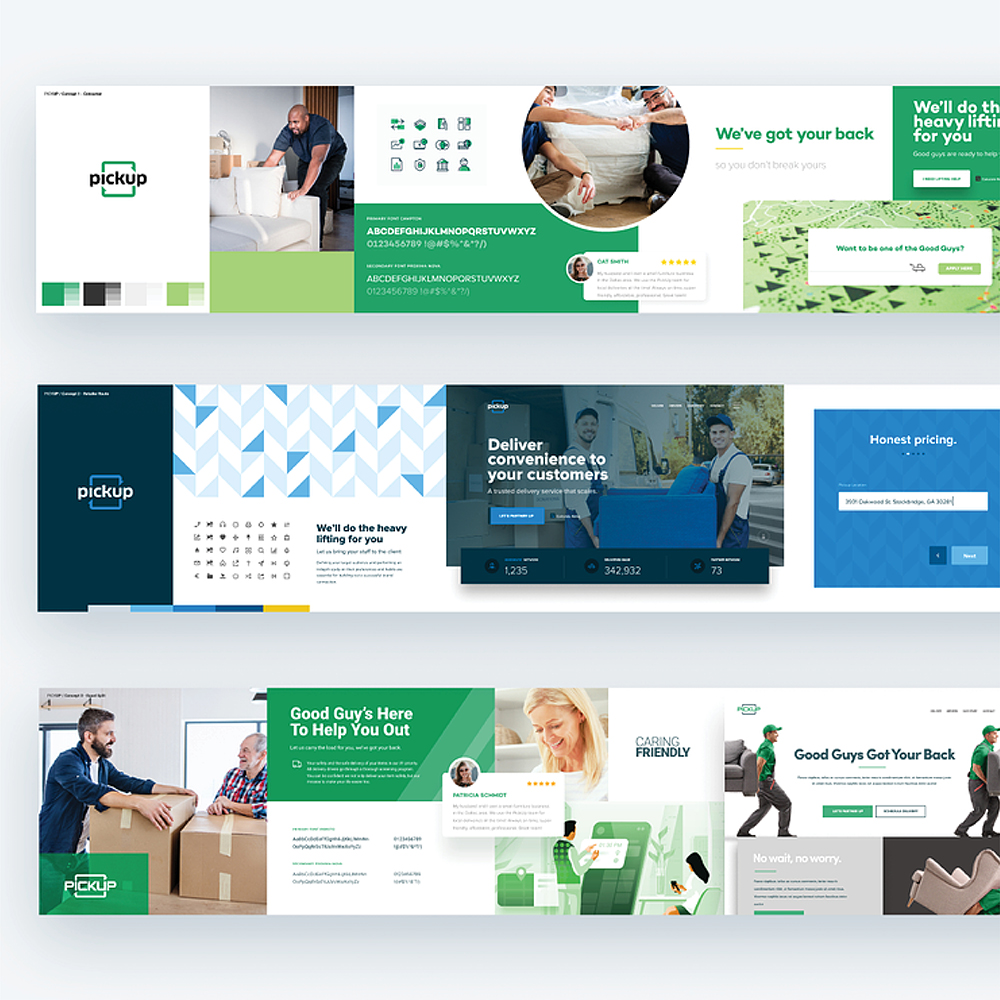Being on the same page as your client when working on a project is essential. At BTP Unite, we do significant creative work, and with that comes art direction and design. To ensure everyone is aligned, we utilize stylescapes, allowing the client to gain an understanding of how the brand will look and feel. What is a stylescape? As defined by thefutur, a well-known design podcast, a stylescape is “a carefully collected combination of images, textures, typography, and colors to create a certain look and feel of a brand, website, interior space, or any other design project.” This contributes to better communication, efficient decision-making, and the successful realization of design projects.
But what, specifically, is a stylescape? Well, there are actually two kinds. One relates to website design, while the other focuses on branding/re-branding. While we have experience with both types, we are going to focus here on stylescapes as they relate to branding and re-branding, as it is for this purpose that they are most frequently used. Re-branding stylescapes are used to preview to the client the upcoming work and will oftentimes include several key features, such as:
1. Font Families
2. Layout Examples
3. Textures
4. A brand color palette
5. Imagery/Illustration styles
So, what does including these features do for the client-agency relationship? Most importantly, it aligns expectations of the upcoming work. If the stylescape is approved, the client can expect a final product resembling what was seen in the document. If it is not approved, then the agency knows it needs to reconsider its approach. Either way, the stylescape serves to avoid a surprise once the work has been completed. Additionally, it allows clients to provide initial feedback before the design work has progressed significantly, avoiding late, time-consuming revisions.
Another reason we use stylescapes at BTP Unite is that it can produce multiple design options. Every branding project could go in several directions, and stylescapes allow those different visions to come to life. Then, clients can choose between variations, thus exploring possibilities for the brand’s future. Stylescapes also provide a chance for productive dialogue between agency and client, where ideas from multiple designs can be discussed and potentially implemented.
A final benefit of stylescapes is that they demonstrate the time and effort the agency can invest in the brand—envisioning all your company or product can be. Not only does it show commitment, but it also displays forward and creative thinking, which, when developing a vision for a brand, is invaluable. Such work also illustrates how an agency conducts its work and what can be expected moving forward, whether it has been selected for a project yet or not. We’ve found that stylescapes contribute immensely to the success of our work, and the satisfaction of our clients. If you’re someone looking for a creative partner, we suggest asking their position of stylescapes. It might just clue you in to how they go about their work.
The Value of Stylescapes


